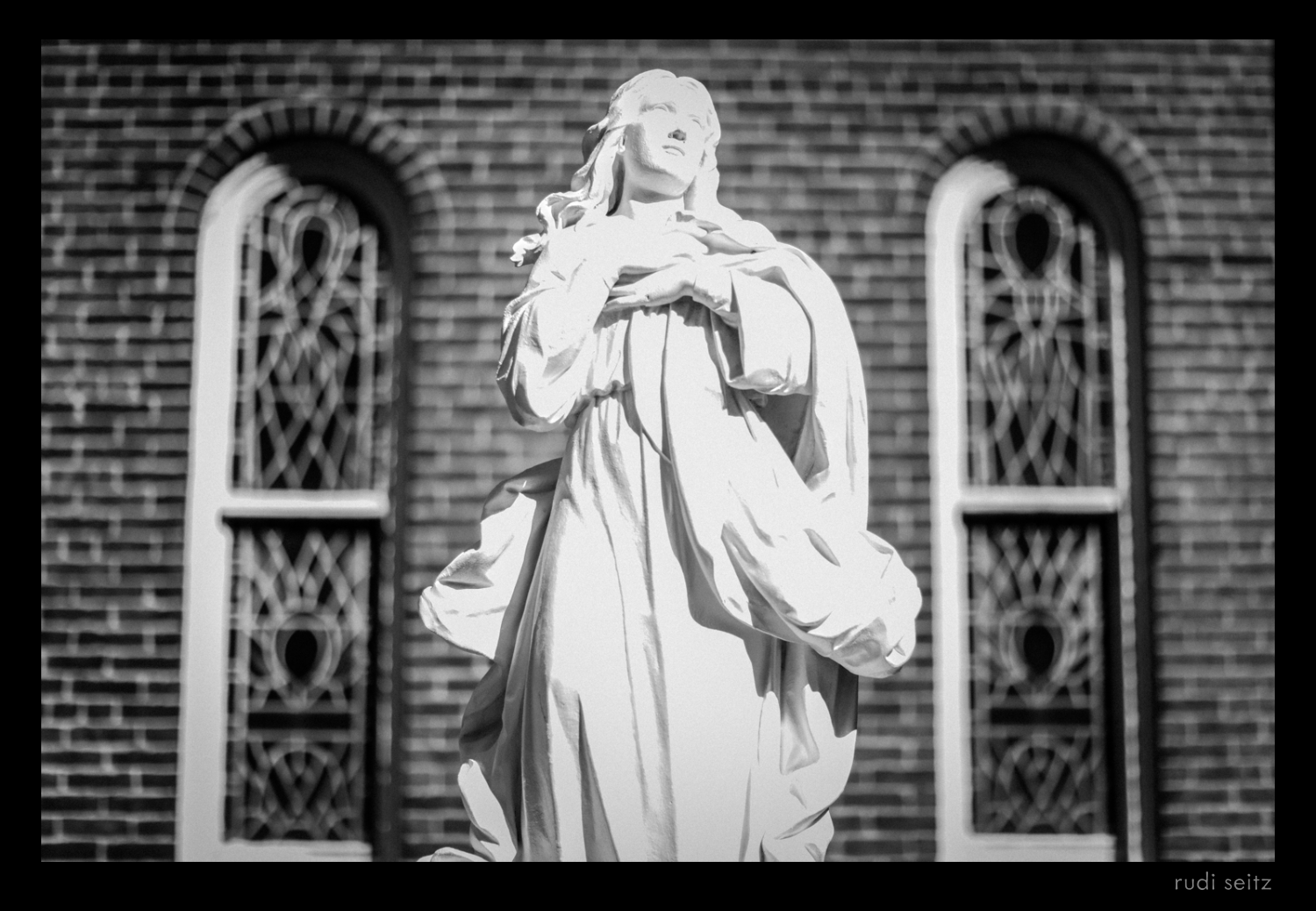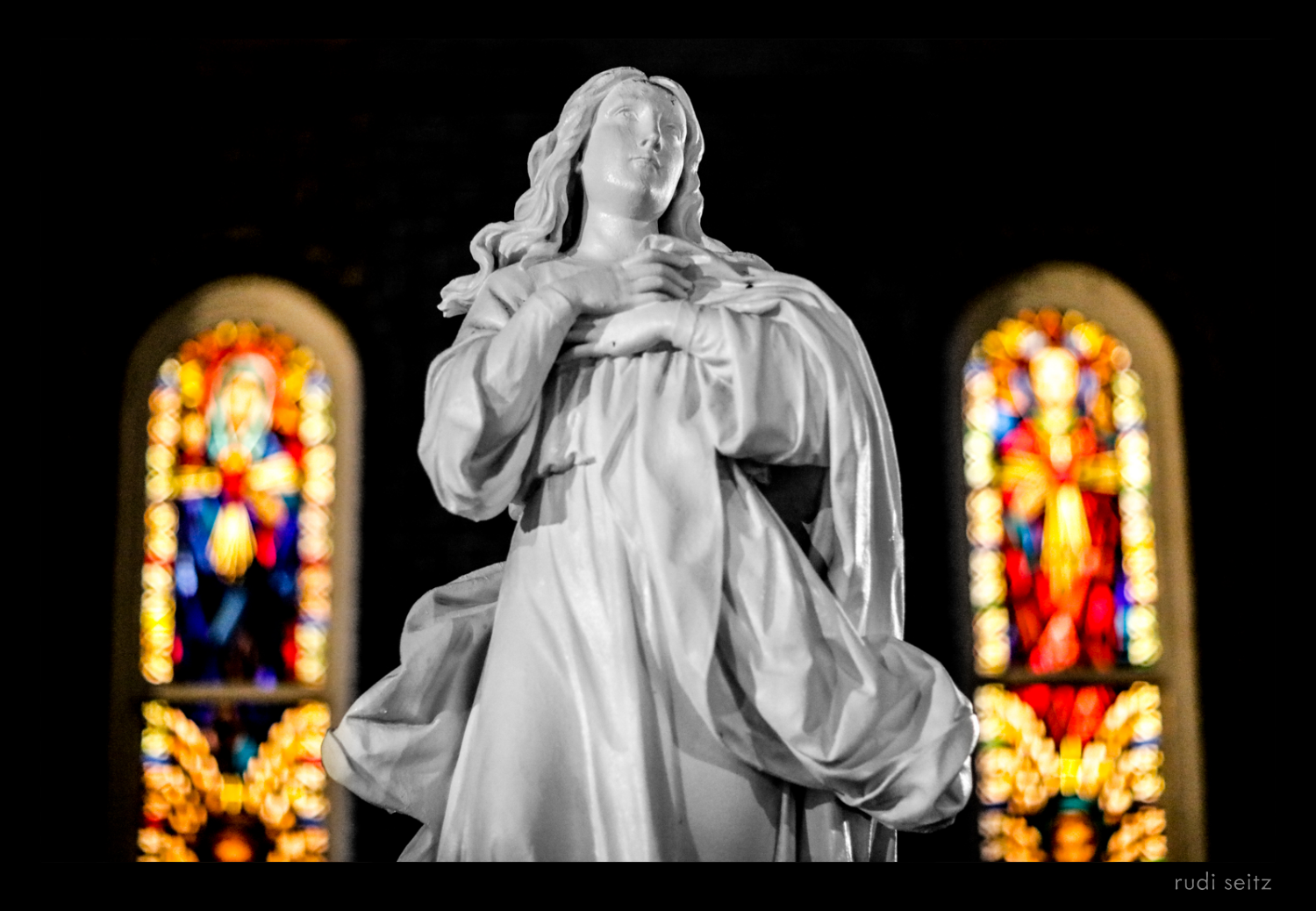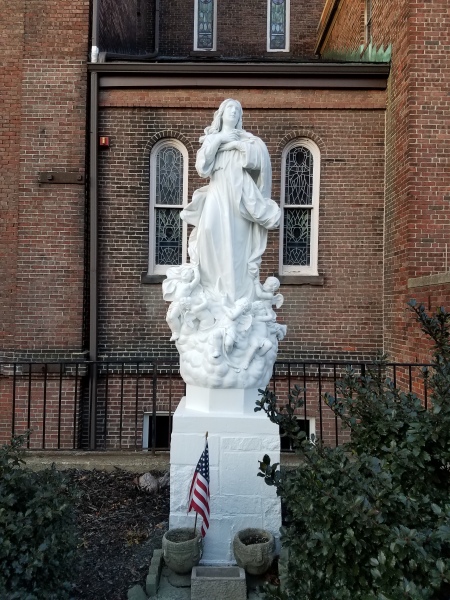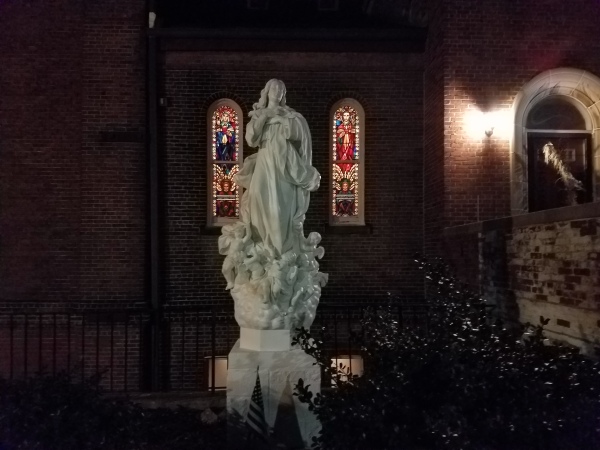One of my goals in taking pictures is to capture the elements of my own, everyday visual life – the things I see as I walk around my neighborhood, as I go about my mundane business. When there’s an object I see over and over again, because it just happens to be situated on my daily path, I become intrigued by the problem of representing it in a single, definitive shot.
Perhaps the hardest things to capture are those we know the best, because we’re more aware of the shortcomings of any particular depiction. When you’ve seen a thing thousands of times, on different days, in different light and weather, while you were in different moods – if you’ve come to know the many faces it can assume – which version do you identify as the truest, the most representative?
There’s a difference between what our eyes show us and what we see in our imagination. Which one of those should a photograph capture?
If the actual process of seeing is a mix of perception (let’s define it as the deterministic processing of sensory stimuli) and interpretation (something that includes extrapolation, memory, and fantasy) what then should a photograph be? You could try to capture what you think is really there or you could try to represent the way that thing makes you feel. You could manipulate the photograph to bring it closer to your imagining, or you could wait until that special circumstance when you are able to take a shot of the object that – without alteration – conveys both “what is there” and “how you feel about it.”
One recurring site in my life is a statue at the Our Lady of the Assumption church on Sumner St. in my East Boston neighborhood. It’s not something that I decided to make a part of my daily visual life, not something I go out of my way to see, but rather something that’s just there on my path, day in and day out, because of where I happen to live and where the statue happens to be.
Since the statue is bright white, it lacks contrast and tends to get blown out in full sun. Behind it are two stained glass windows. The windows are intriguing in themselves, but they tend to look disappointing in a daytime photograph because their colors are hard to see on the exterior side. The statue is also challenging to photograph at night: now the stained glass is lit up but there’s also harsh flood-light nearby that casts the statue and brick wall in a rather unpleasant yellow. How to do the scene justice when the windows are so much more naturally engaging at night than the statue itself?
For a long time I embraced a very restrictive approach to my photographic process: shoot only in squares, with a fixed-focal length lens, and do absolutely no post-processing. I was resisting the convenience, the seeming effortlessness of digital photography. I wanted to add friction to the process, I wanted to make it harder, so that when a shot really worked out, it would “mean something.” Of course this was a trade-off as it meant that some images I might have liked to create were simply impossible.
In my earlier approach, the Assumption statue was one of those subjects that I considered out of limits. There were too many challenges to getting a “great” shot given my self-imposed restrictions. I was OK with that. I was OK with the idea that there were certain subjects I’d have to pass up, since this seemed to make it even more valuable when I found something I could capture effectively.
Now that I’m experimenting with a less restrictive approach to my process, I’m startled by just how much easier things become. I can go outside and snap a few photos, then go home and sit in front of a screen for an hour or two, and with a little bit of software magic, I’ve got the image I want. Where’s the struggle, the search, the days and days of effort and frustration?
As for the daytime shot, converting it to black and white makes the white statue even more brilliant and softens the “disappointment” of not seeing the colors of the stained glass. After an initial conversion to black and white, the statue was still “blown out” but by judiciously adjusting contrast I was able to recover and intensify the faint shadows on the statue to bring it into definition. Cropping the image allowed me to get that perfect frame that can be so difficult to achieve at the moment of capture. Here’s my processed, “ideal” daytime shot of the statue:

As for the nighttime shot, this one seemed a good candidate for a post-processing concept I’m fond of: the partial or selective conversion to black and white. Here the statue is converted to black and white while the windows are left in color and their saturation is increased. By adjusting the brightness of the statue one can achieve a balance where the statue no longer seems upstaged by the windows:

So what’s the value of my having done this? What’s the outcome of relaxing my once-strict process to create these images?
On the one hand, I think I’ve done justice to what I observe. I’ve found a way to convey a mix of what I “see” and what I “imagine” when I pass by this particular subject. This is not to say I’m done forever, that I’ll never want to take another picture of this subject. But I no longer see it as the challenge I once did. It’s no longer an “impossible” subject that will tantalize me indefinitely, making me wonder if someday, by some special chance, the circumstances will be just right that I can take the picture I want. No, after some casual shots followed by heavy post-processing, I’ve got the result I want, and I can move on.
But I’ve lost something too. These shots are more brilliant, more striking than what my former, highly restrictive process would have allowed. But I’m not sure I feel as personally connected to them, or as proud of them, as I feel about some of the other images in my portfolio that I’ve really struggled for. I don’t have the memory of standing there in front of the statue for hours, experimenting with every possible vantage point, every possible frame, moving this way and that, all in pursuit of the elusive perfect shot – because, of course, I didn’t stand there for hours, and most of my experiments were made after the moment of capture.
Now the question is, from the viewer’s perspective, if I say nothing and simply show you the image, does it really matter how I feel about it? Would you rather see a less brilliant shot that I’m personally attached to, that I really struggled for, or would you like to see the “perfect” shot that I feel more distant from – the one I achieved with heavy editing?
Now that you’ve seen my serious, processed shots, here are two quick mobile snapshots of the statue to give you a sense of the raw material of the scene.

 ■
■